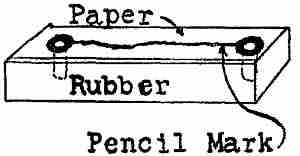
QST, Vol. I, №6, May, 1916, p. 100
FROM time to time operators write that "the Audion occasionally goes out of commission and although it restores itself, does not do so immediately". The reason is easy to explain.
The highly perfected state of the present Audion is the cause. It is so extremely sensitive to very small impulses that when a powerful station nearby begins to transmit, or a charge of "static" strikes the receiving aerial, the bulb becomes choked or "paralyzed." If the bulbs were made less sensitive, they would not be affected by these impulses to so great a degree, but the greatest aim has been to make them as sensitive as possible.
The "Paralyzing" feature, while not serious, nor even comparable to that in other types of detectors, is annoying, but is easily overcome by connecting a path of very high resistance between the plate and grid wires.

The best form of resistance shunt is made by pasting a sheet of paper on a block of hard rubber about 2 by 4 inches by ¼ inch thick — a hole is drilled near each end of the block and around the holes to make a circle ½ inch in diameter, a coat of graphite is placed by rubbing with a pencil on the paper. A binding post is then placed over this circle at each end, so that a good contact is made between the post and the graphite.
If one binding post is connected to the plate wire and one to the grid wire of the Audion Bulb, and a very light pencil mark is drawn between the two circles connecting the binding posts, the paralyzing will be prevented. If the line is too heavy, all signals will be weakened. If it is too light, the Audion will still paralyze. A little experimenting will produce the proper weight, and thereafter the "static leak" should be left alone.